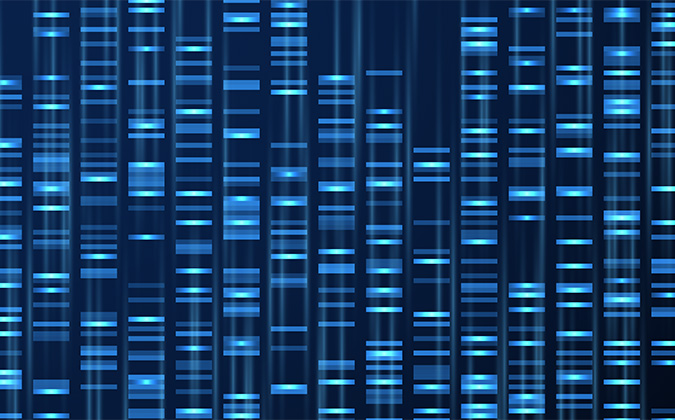
New research on deltamethrin resistance could pave way for optimized sea lice treatment
New research on deltamethrin resistance in sea lice could help improve the effectiveness and reduce the costs of treating the global salmon industry’s “billion-dollar problem.”
The research, led by PhD student Claudia Tschesche at the University of Stirling’s Institute of Aquaculture, UK, and sponsored by PHARMAQ, aims to reveal the genetic basis of resistance to deltamethrin, which has been one of the most widely used active pharmaceutical ingredients for treating sea lice in Scotland, Norway and Chile. By identifying the exact mutation that causes resistance to develop — and examining how this occurs — Tschesche’s work could enable more accurate and efficient sensitivity testing while helping to reduce costly treatment failures.
“This work could open up ways to significantly reduce sea lice treatment costs, while also giving fish farmers much greater confidence in their treatment protocols,” Tschesche told Fish Health Forum.
“With a far better understanding of the mechanisms of deltamethrin resistance in sea lice, we will be able to advance resistance management and improve treatment strategies, potentially including the development of a reliable molecular test for resistance in the lice.”
Major barrier to growth
In recent years, the salmon louse (Lepeophtheirus salmonis) has been a major barrier to growth in the salmon industry.
Though salmon production has increased by more than 470% over the past 25 years,1 chronic infestations of these naturally occurring parasites have more recently made it challenging for producers to achieve even modest harvest increases, while also ramping up costs.2 In 2018, the cost of sea lice infestations to the salmon industry was estimated at US $873 million.3
With its ability to rapidly clear parasite infestations, deltamethrin has been used in chemotherapeutic treatments for lice infections in farmed salmon in Norway since 1998 and in Scotland since 2008,4 proving particularly effective toward the end of the production cycle.
Over time, however, use of deltamethrin has decreased significantly as lice have developed resistance to pyrethroids, the family of insecticides to which deltamethrin belongs.5 Furthermore, studies have found that deltamethrin-resistant females transmit resistance to all their descendants, accelerating its spread.6
Improved sensitivity testing needed
According to Tschesche, pyrethroid resistance remains high in the aquaculture-intensive regions of both Norway and Scotland, despite decreased use. However, a hopeful sign is that wild Atlantic salmon returning from the ocean were found to carry fewer resistant lice than salmonids in the areas of intensive aquaculture, and that the resistant genotype was not detected in samples from Canada.7,8
Sensitivity testing is therefore critical to avoiding costly treatment failures, Tschesche said, particularly on farms that have stopped using deltamethrin. However, she added, current testing methods — which involve running bioassays on lice harvested from the farming site — are unreliable as well as expensive and cumbersome to perform, underlining the need to develop more reliable and cost-effective techniques.
Resistance found in larvae
Now in its third and final year, Tschesche’s PhD project sheds further light on the genetic causes of deltamethrin resistance in sea lice while paving the way to develop more accurate and efficient sensitivity tests.
Previous studies have demonstrated that resistance is mainly inherited maternally and is associated with mitochondrial mutations, with resistant parasites showing several single-nucleotide polymorphisms not found in susceptible individuals.9
Building on these findings, Tschesche performed crosses with parent lice of different deltamethrin resistance profiles. This proved to be an important tool for testing hypotheses around the roles and relative importance of specific mutations in passing down deltamethrin resistance, she said.
Furthermore, she developed a bioassay protocol that can be run on sea lice larvae. This tool enables more accurate, efficient and economical resistance monitoring than traditional bioassay tests. Instead of performing bioassays with adult and pre-adult II sea lice directly collected from farming sites, sea lice egg strings are collected from salmon farms and then hatched and tested under controlled laboratory conditions — reducing not only the risk of error but also time and costs.
“Sea lice are the salmon farming industry’s billion-dollar challenge. There would be a clear benefit for those farmers to be able to quickly determine, with much greater accuracy, whether the lice at their sites are sensitive to deltamethrin,” Tschesche said.
“If the treatment still has a positive effect, then it makes sense to keep using it as part of an integrated pest-management strategy that also includes non-medicinal approaches, such as co-culture with cleaner fish, or mechanical or thermal delousing.”
References
1 Mowi Salmon Farming Industry Handbook 2020
2 Aaen SM, Helgesen KO, Bakke MJ, Kaur K, Horsberg TE. Drug resistance in sea lice: a threat to salmonid aquaculture. Trends in parasitology. 2015;31:72-81.
3 Brooker AJ, Skern-Mauritzen R, Bron JE. Production, mortality, and infectivity of planktonic larval sea lice, Lepeophtheirus salmonis (Kroyer, 1837): Current knowledge and implications for epidemiological modelling. ICES J Mar Sci. 2018;75:1214-1234.
4 Aaen SM, Helgesen KO, Bakke MJ, Kaur K, Horsberg TE. Drug resistance in sea lice.
5 Fjørtoft HB, Nilsen F, Besnier F, Espedal PG, Stene A, Tveten AK, Bjørn PA, Aspehaug VT, Glover KA. Aquaculture-driven evolution: distribution of pyrethroid resistance in the salmon louse throughout the North Atlantic in the years 2000–2017. ICES J Mar Sci. 2020;77:1806-1815.
6 Carmona-Antonanzas G, Bekaert M, Humble JL., Boyd S, Roy W, Bassett DI, Houston RD, Gharbi K, Bron JE, Sturm A. Maternal inheritance of deltamethrin resistance in the salmon louse Lepeophtheirus salmonis (Krøyer) is associated with unique mtDNA haplotypes. 2017. PloS one, 12, e0180625.
7 Ibid.
8 Fjørtoft HB, Nilsen F, Besnier F, Espedal PG, Stene A, Tveten AK, Bjørn PA, Aspehaug VT, Glover KA. Salmon lice sampled from wild Atlantic salmon and sea trout throughout Norway display high frequencies of the genotype associated with pyrethroid resistance. Aquaculture Environment Interactions. 2020;11:459-468.
9 Carmona-Antonanzas G, Bekaert M, Humble JL., Boyd S, Roy W, Bassett DI, Houston RD, Gharbi K, Bron JE, Sturm A. Maternal inheritance of deltamethrin resistance.






